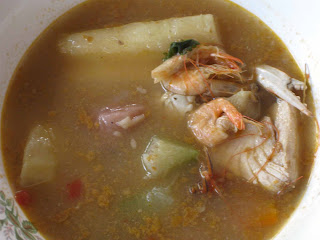
If we were back in the States, there would still be boxes of beer arriving on our doorstep every morning and afternoon, like alcoholic clockwork. In Bluefields, you will never get packages (they’ll be waiting for you at the post office, should they accidentally arrive at all) and any packages on your porch are probably something you shouldn’t open, especially if they slosh around. In other words, forget everything you know about New Glarus, Lost Abbey, Hair of the Dog, Alesmith, Pizza Port, sour ales and lambic.
Even the tears on your pillow, you’ll notice, taste worse here.
But there are some slight condolences, thankfully the largest of which is not the fact that Toña is, after some careful and independently validated studies, the best cerveza available this side of Managua. God help us. It’s fresher and differently labeled than the U.S. imported version, it’s one of the two major imbibing staples in Bluefields (the other being 375mL bottles of light FdC, served simply with ice and lime), and it’s also as cheap or cheaper (13-20 cords, $0.65-1) than your other options: Victoria, Victoria Frost (shiver), Premium (it isn't), Brava Beats (wtf?), and the imported monstrosities of Heineken and Smirnoff Ice, which are twice as expensive as the locals. There is, legend has it, a single Irish pub back in Managua serving Guinness at inflated prices, and you will contemplate daytrips.
You’ll see passion fruit as a fermentable. You’ll consider purchasing that bottle of Nica moonshine (in a used soda bottle) you've been eyeing up.
But!, there is goodness to be found. Even the worst rums here, Cañita and Plata, are suitable for shots and defusing with large quantities of citrus. At 22-30 cords ($1.10-1.50) for a half-bottle, you’ll be a cheap date. There are, if you look hard enough and have money, a few of those most ubiquitous liquors here: Beefeater and Tanqueray (but rarely tonic), Cuervo, Baileys, low-end Johnny Walker, Jack, etc., at shot prices of about 50 cords ($2.50) apiece. Poor generics range from white wine to cognac.
What you really want, however, what you honestly and truly and at the very core of your two-thirds-liquid existence hope for, is the sweet sweet Flor de Caña. The cheapest full bottles of blanco (aged 4 years, available regular and extra dry) will set you back about 100 cords downtown ($5). The regular blanco and a 7-year old dark version are available almost everywhere, similarly priced. You’ll find dusty bottles of versions you’ve never heard of as you shop downtown. Remember to bring an empty with you, unlike one forgetful gringo couple, or you’ll end up paying a bottle deposit each time.
We’ve been everywhere for the most part (every club, which doesn’t take long in Bluefields, bars on hills, bars in pulperias, bars on rooftops), and the best place to drink is also the most misplaced. Say hello to the gentleman manning the door (seriously, say hello, he’s got a gun). Oasis Casino, near the municipal wharf, is basically the only place around here you’ll ever even see the Flor de Caña 21 ($5) or, for that thrifty-but-elegant Caribbean drug smuggler in your life, the 18 ($2.50), probably the best drink in town.






























